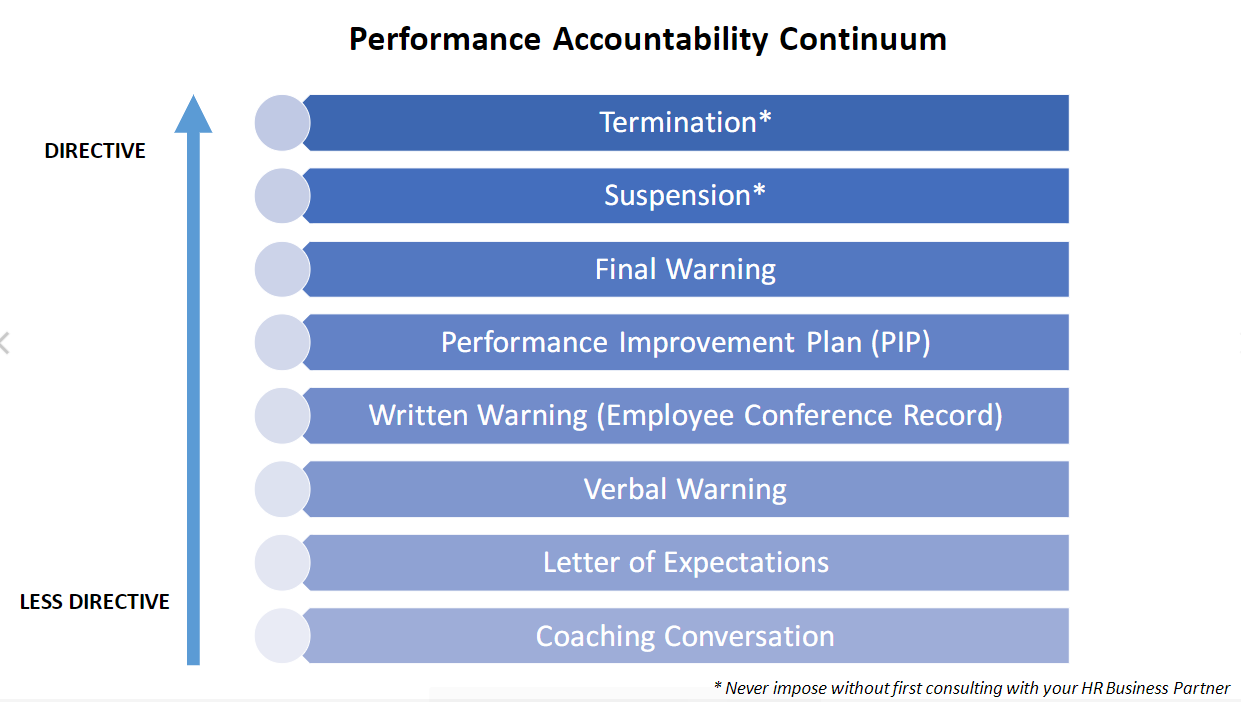Supervisor Toolkit
Find your Talent Acquisition Specialist, Compensation Specialist, or Employee Relations HERE.
Performance Commitment and Accountability
- Setting Expectations
-
Through clear expectations, ongoing feedback, coaching, and mutual accountability, employees and managers can agree to performance metrics that matter to the employee's work, interests, and goals of the team and organization.
Setting expectations includes but is not limited to:
- outlining clear expectations for the role
- co-creating SMART goals with each employee
- aligning work with the team, department, etc.
Resources and Tools
- Setting SMART Goals
- Template - Letter of Expectations*
- Performance Development - the Roles of Staff and Supervisor
*indicates the form is now available in iO Performance Management; contact your HRBP
Related Policies
- Feedback and Check-ins
-
Assuming a supervisor has provided an intentional, effective onboarding experience and has outlined clear expectations, feedback is critical for employees as they begin their new role and throughout their employment at Rice.
There are numerous approaches when it comes to providing feedback. The following are a few selected resources and tools we have found to be effective. The Performance Commitment and Accountability training (a module in the Essentials of Supervision program) will cover feedback more extensively, as well as provide additional resources.
Resources
To use the Feedback and Check-in options in iO look for upcoming training opportunities on the Organizational and Talent Development page or contact your HRBP.
- Managing Performance Issues
-
Supervisors are accountable for setting performance expectations for their staff and overseeing and providing feedback on their performance and behavior. It is the supervisor's responsibility to employ the appropriate interventions promptly when a staff member falls short of performance or behavior expectations.

Resources and Tools | LINK to folder
- A Guide to Performance Accountability
- Performance Accountability Options
- Decision-Making Process - Identifying the Appropriate Performance Action
- Template - Performance Improvement Plan
- Template - Employee Conference Record
- Template - Performance Improvement Plan - MEMO format
Contact your HRBP if you are recommending separating employment with an employee.
Related Policies
- Supporting an Employee's Departure
-
Employees are one of our most valuable resources, but sometimes employees move on to other roles. This can be stressful for a supervisor, but please be sure to assist the employee with the transition from Rice. They may decide to return someday!
Resources and Tools
- Supervisor and Employee Checkout List - please print, complete with your employee, and ask your HCMI to load the document into the employee's records.
- Exiting Rice resources in the HR Services Forms and Links website.
- Leaving Rice website with benefits information for eligible employees.
Related Policies
